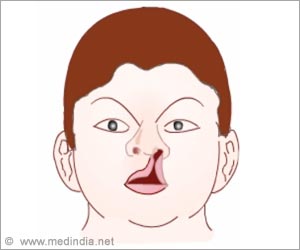Researchers at Cincinnati Children's Hospital Medical Center have developed the first gene chip, termed as “Jaundice Chip”
Researchers at Cincinnati Children's Hospital Medical Center have developed the first gene chip, termed as “Jaundice Chip” that may lead to early diagnosis of at least five hereditary liver diseases. The chip may also be used to detect genetic causes of jaundice in children and adults, and potentially to lead to personalized treatment options.
The Cincinnati Children's study results were published in the January issue of the journal Gastroenterology. According to the study, the chip is nearly 100 percent effective in the detection of the most common mutations in children with inherited causes of jaundice."Other chips have been developed to assess drug metabolism," said Jorge Bezerra, MD, a pediatric gastroenterologist at Cincinnati Children's and the study's lead investigator. "This is the first chip in the world that has been customized to diagnose genetic mutations in patients with inherited types of liver diseases."
The chip uses a new technology that rapidly and accurately discloses the composition of several genes known to cause liver disease in children and adults. "The jaundice chip may also help us to discover whether subtle changes in these five genes that can cause devastating diseases in children may also modify the clinical course of other common liver diseases in adults,"said Mitchell Cohen, M.D., director of the division of gastroenterology hepatology and nutrition at Cincinnati Children's.
Jaundice is a yellowing of the eyes and skin caused by impairment in bile flow from the liver to the intestine. Impaired bile flow, or cholestasis, commonly known as jaundice, can lead to severe liver disease. In children, jaundice and cirrhosis are responsible for more than half of the need for liver transplantation.
Previous research on humans identified five genes responsible for inherited forms of jaundice, until now, the broad array of causes of cholestasis including genetic, metabolic, inflammatory and drug- or toxin-induced disorders, created a challenge for physicians to diagnose a specific disease.
Therefore, the treatment of affected children was not disease-specific and aimed at optimizing care to help reduce liver transplantation. With the jaundice chip, however, diagnosis can be simplified by surveying the genetic code for mutations in specific diseases.
Advertisement
Gene chips contain several thousand small fragments of DNA on a small piece of glass. Incubation of these chips with the patient's DNA sample produce chemical signals that "glow" and allow for the detection of the normal gene sequence, or of mutations if they are present in the patient.
Advertisement
"With further genetic testing of liver disease, there is the potential that medications can be tailored to meet the needs of individual patients taking into account the patient's genetic make-up," adds Dr. Bezerra. "For now, the use of the gene chip gives families piece of mind, knowing what their child is living with. The next focus of advances will be the development of medication that may block progression of their disease.
Today, detection of liver diseases with the jaundice chip is continuing, using samples from children worldwide through a research protocol in the division of gastroenterology, hepatology and nutrition at Cincinnati Children's. Once approved by the Food and Drug Administration, the potential for wider use is limitless, according to Dr. Bezerra.
Source-Eurekalert
SRI






